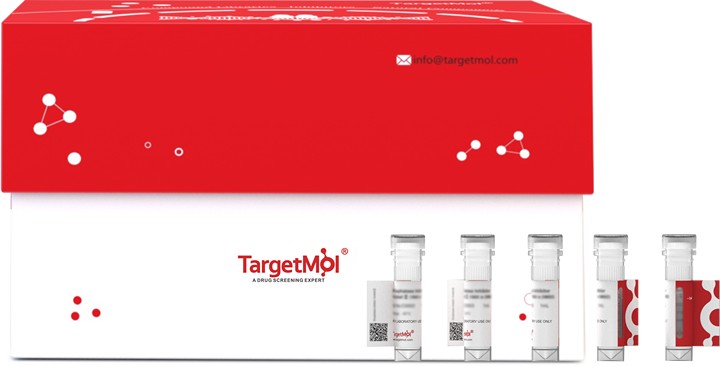Shopping Cart
- Remove All
 Your shopping cart is currently empty
Your shopping cart is currently empty

FUT7 Protein, Mouse, Recombinant (His) is expressed in E. coli expression system with N-6xHis tag. The predicted molecular weight is 41.8 kDa and the accession number is Q11131.

| Pack Size | Price | Availability | Quantity |
|---|---|---|---|
| 20 μg | $360 | 20 days | |
| 100 μg | $745 | 20 days | |
| 1 mg | $2,530 | 20 days |
| Biological Activity | Activity has not been tested. It is theoretically active, but we cannot guarantee it. If you require protein activity, we recommend choosing the eukaryotic expression version first. |
| Description | FUT7 Protein, Mouse, Recombinant (His) is expressed in E. coli expression system with N-6xHis tag. The predicted molecular weight is 41.8 kDa and the accession number is Q11131. |
| Species | Mouse |
| Expression System | E. coli |
| Tag | N-6xHis |
| Accession Number | Q11131 |
| Synonyms | Galactoside 3-L-fucosyltransferase,Fut7,Fucosyltransferase VII,Fucosyltransferase 7,Alpha-(1,3)-fucosyltransferase 7 |
| Amino Acid | LWGSAPGSAPVPQSTLTILIWHWPFTNRPPELPGDTCTRYGMASCRLSANRSLLASADAVVFHHRELQTRQSLLPLDQRPHGQPWVWASMESPSNTHGLHRFRGIFNWVLSYRRDSDIFVPYGRLEPLSGPTSPLPAKSRMAAWVISNFQERQQRAKLYRQLAPHLQVDVFGRASGRPLCANCLLPTLARYRFYLAFENSQHRDYITEKFWRNALAAGAVPVALGPPRATYEAFVPPDAFVHVDDFSSARELAVFLVSMNESRYRGFFAWRDRLRVRLLGDWRERFCTICARYPYLPRSQVYEDLESWFQA |
| Construction | 79-389 aa |
| Protein Purity | > 85% as determined by SDS-PAGE. |
| Molecular Weight | 41.8 kDa (predicted) |
| Endotoxin | < 1.0 EU/μg of the protein as determined by the LAL method. |
| Formulation | If the delivery form is liquid, the default storage buffer is Tris/PBS-based buffer, 5%-50% glycerol. If the delivery form is lyophilized powder, the buffer before lyophilization is Tris/PBS-based buffer, 6% Trehalose, pH 8.0. |
| Reconstitution | Reconstitute the lyophilized protein in sterile deionized water. The product concentration should not be less than 100 μg/mL. Before opening, centrifuge the tube to collect powder at the bottom. After adding the reconstitution buffer, avoid vortexing or pipetting for mixing. |
| Stability & Storage | Lyophilized powders can be stably stored for over 12 months, while liquid products can be stored for 6-12 months at -80°C. For reconstituted protein solutions, the solution can be stored at -20°C to -80°C for at least 3 months. Please avoid multiple freeze-thaw cycles and store products in aliquots. |
| Shipping | In general, Lyophilized powders are shipping with blue ice. Solutions are shipping with dry ice. |
| Research Background | Catalyzes the transfer of L-fucose, from a guanosine diphosphate-beta-L-fucose, to the N-acetyl glucosamine (GlcNAc) of a distal alpha2,3 sialylated lactosamine unit of a glycoprotein or a glycolipid-linked sialopolylactosamines chain through an alpha-1,3 glycosidic linkage and participates in the final fucosylation step in the biosynthesis of the sialyl Lewis X (sLe(x)), a carbohydrate involved in cell and matrix adhesion during leukocyte trafficking and fertilization. In vitro, also synthesizes sialyl-dimeric-Lex structures, from VIM-2 structures and both di-fucosylated and trifucosylated structures from mono-fucosylated precursors. However does not catalyze alpha 1-3 fucosylation when an internal alpha 1-3 fucosylation is present in polylactosamine chain and the fucosylation rate of the internal GlcNAc residues is reduced once fucose has been added to the distal GlcNAc. Also catalyzes the transfer of a fucose from GDP-beta-fucose to the 6-sulfated a(2,3)sialylated substrate to produce 6-sulfo sLex mediating significant L-selectin-dependent cell adhesion. Through sialyl-Lewis(x) biosynthesis, can control SELE- and SELP-mediated cell adhesion with leukocytes and allows leukocytes tethering and rolling along the endothelial tissue thereby enabling the leukocytes to accumulate at a site of inflammation. May enhance embryo implantation through sialyl Lewis X (sLeX)-mediated adhesion of embryo cells to endometrium. May affect insulin signaling by upregulating the phosphorylation and expression of some signaling molecules involved in the insulin-signaling pathway through SLe(x) which is present on the glycans of the INSRR alpha subunit. |

Copyright © 2015-2025 TargetMol Chemicals Inc. All Rights Reserved.